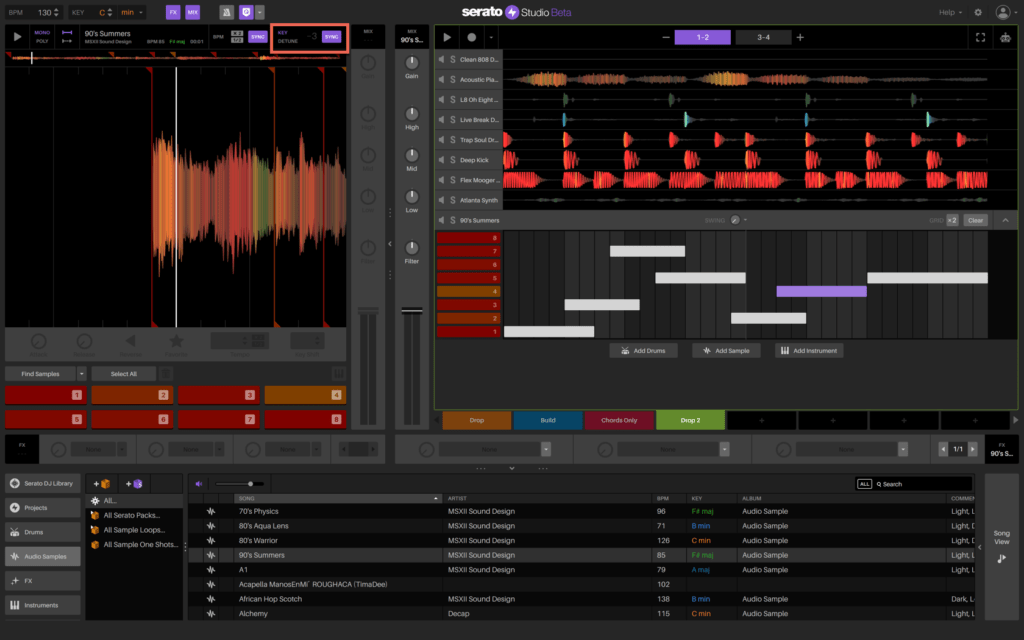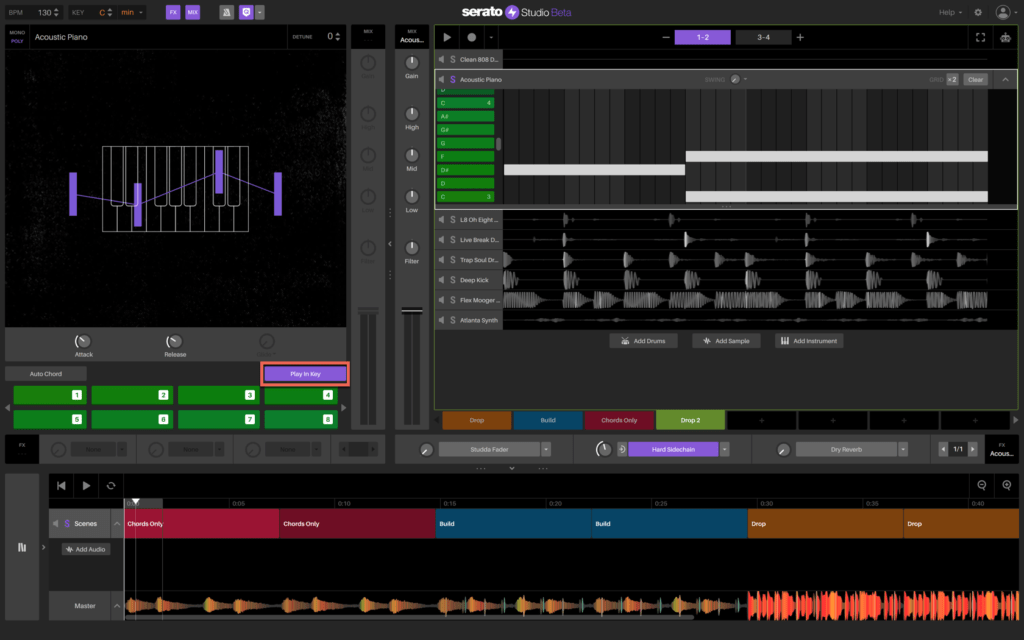How to understand key: Beat Making Basics #4
How to understand key
If you don’t understand traditional music theory, never fear – you’re not alone. There are countless accomplished producers with stacks of hit records and zero musical training.
In saying this, understanding key will be invaluable when it comes to creating chords, melodies, and compositions in general. So read on – we’re going to get a little bit old school here for a second, but this is worth understanding.
The key of a song refers to the scale of notes (like on a piano) that your track resides in. There are major keys, which usually sound happier. Minor keys, a little darker. The key of a song will be A – G, referencing the keys on a piano.
Not all notes work together in every scenario, and even understanding that fact means you’ve already learnt something really important.
Here are a few basic facts about musical key, and how you can make it as easy as possible for yourself to make quality tracks in Serato Studio.
The key of your project
Any track you make, unless it has nothing but drums, will have a key.
The key of your project will be decided by your first sample or melodic instrument. From there, you’ll need to make sure any further melodic layers to your track are in that same key – this includes samples, keys, basslines, vocals etc.
There is the odd exception to this rule, but for now, stick to the above as your rule of thumb.
Key syncing in Serato Studio
One of the time consuming roadblocks that many producers hit is transposing a sample into the key of the rest of their project.
In Serato Studio, this has never been easier. All it takes is the click of a button located above the Sample Deck. By default your loaded sample will sync to your project key, as long as ‘Sync’ stays on.

You can also shift and detune the key manually in your Sample Deck controls if you want to keep a little more manual control over your samples. It’s entirely up to you.
Play-in-Key Mode
We didn’t want your lack of piano lessons as a kid to hinder your ability to make great music. There are loads of great sounds and instruments in Serato Studio that are going to be the bridge between what you hear in your head and what you’ll eventually show your friends.
Serato Studio has an amazing feature called Play-in-Key mode. This means that only the instrument notes in the key of your project will be available for you to play. No music theory, no problem.
When you load up an instrument PIK Mode will be on by default. If you want all keys available to play just turn this mode off – it’s as simple as that.

Auto Chords
Serato Studio has developed an incredible tool that assists you in achieving the sonics you want through chords, without the stress of maneuvering through the stages required to get there.
This feature is called Auto Chord Mode. This mode allows you to create any chord between 2-7 notes from a single note and in key. So you can create full chord progressions by playing a single note melody on your QWERTY or MIDI keyboard – like magic.
Not only is this super helpful for making your track sound more full and professional, but it will also fast track your ability to learn how chords work.

Now you’ve got the key basics down, it’s time to look at chords in depth. Read ‘How to use chords’ for the juicy details.

